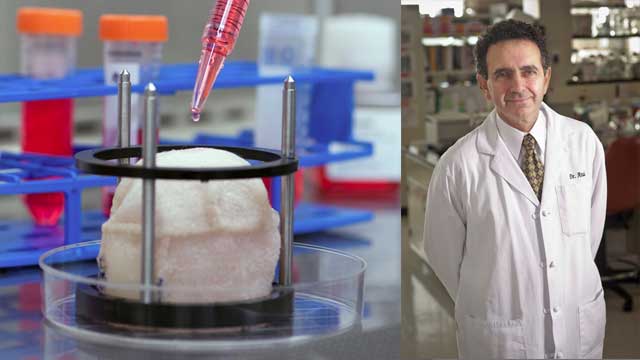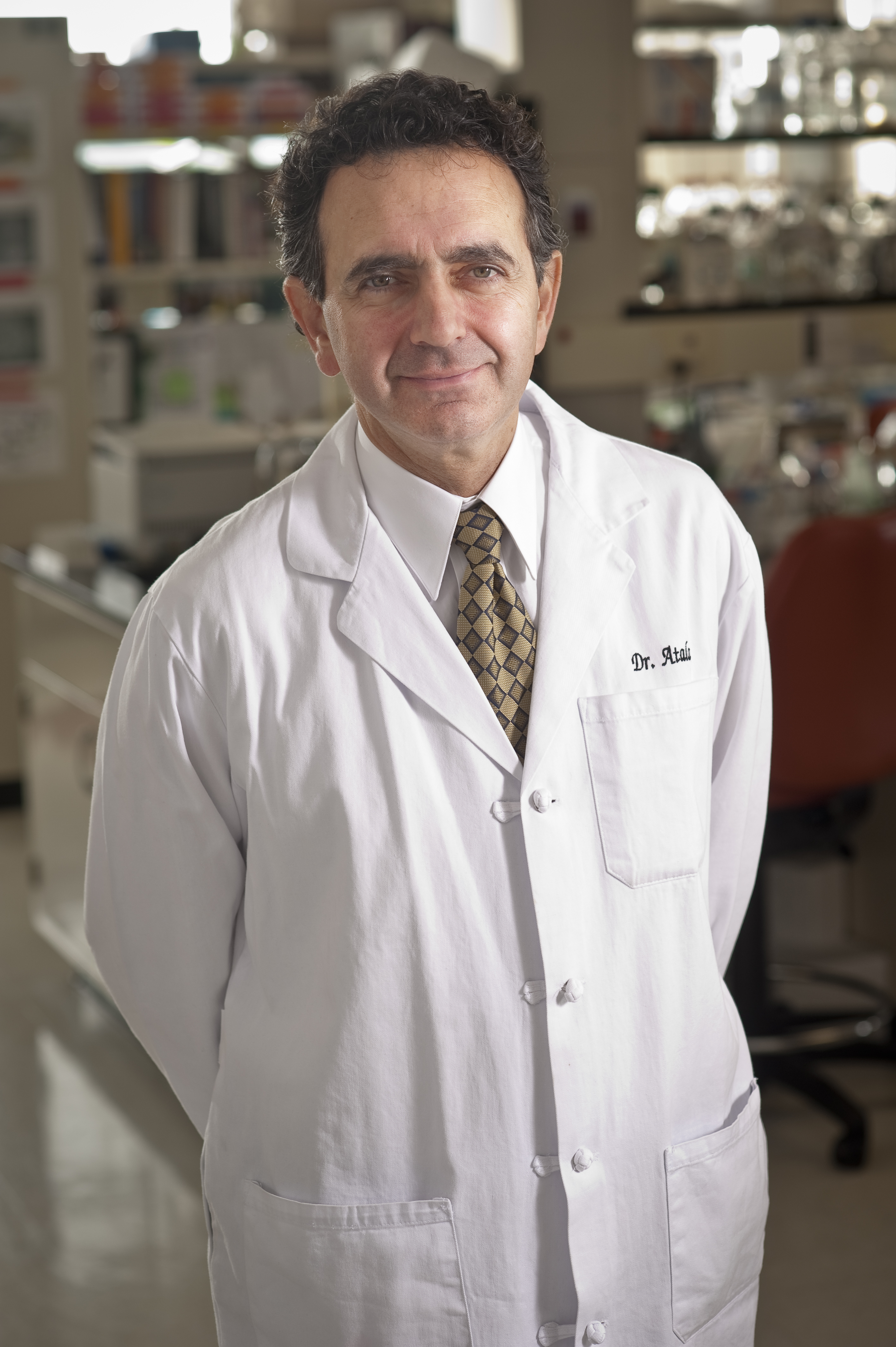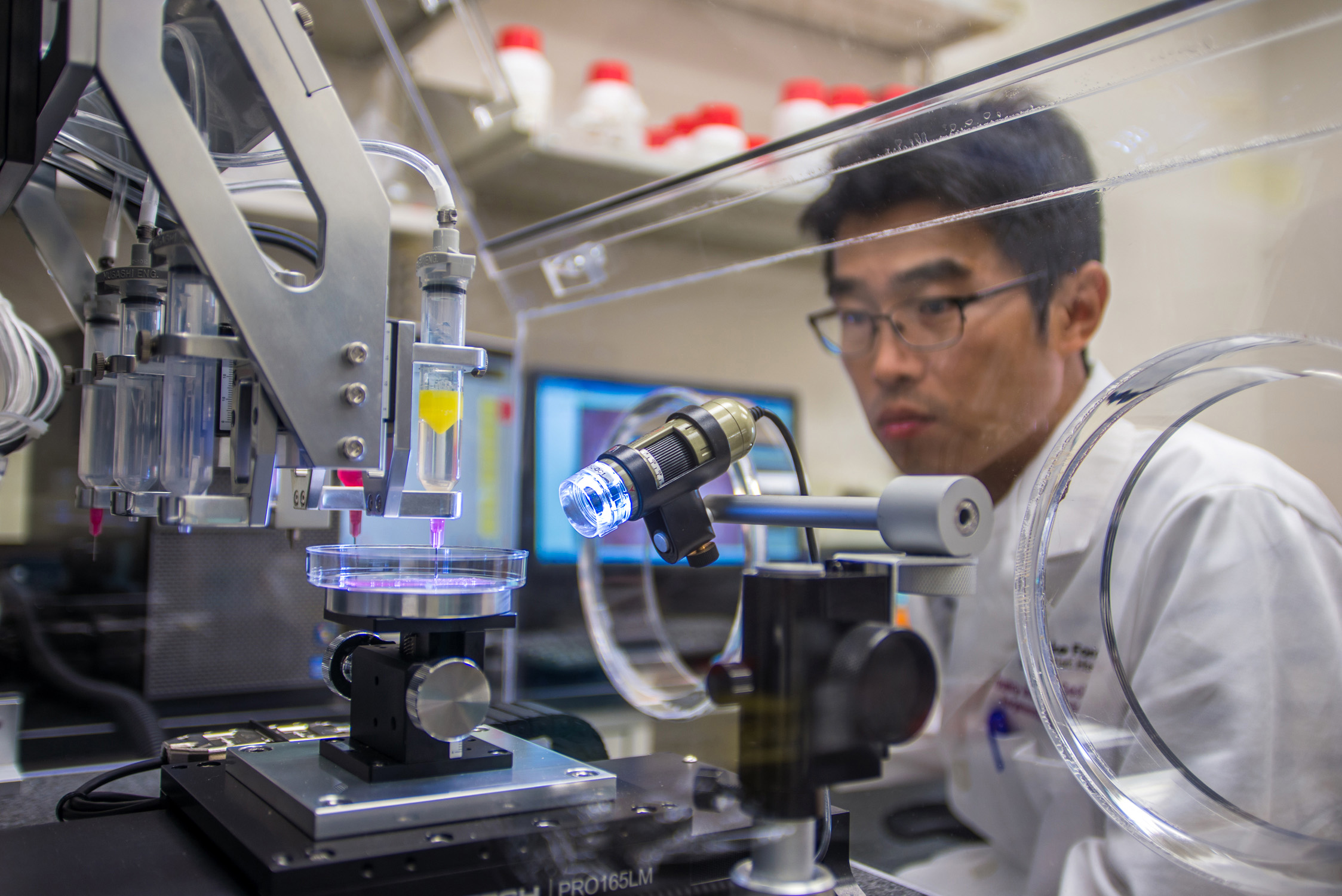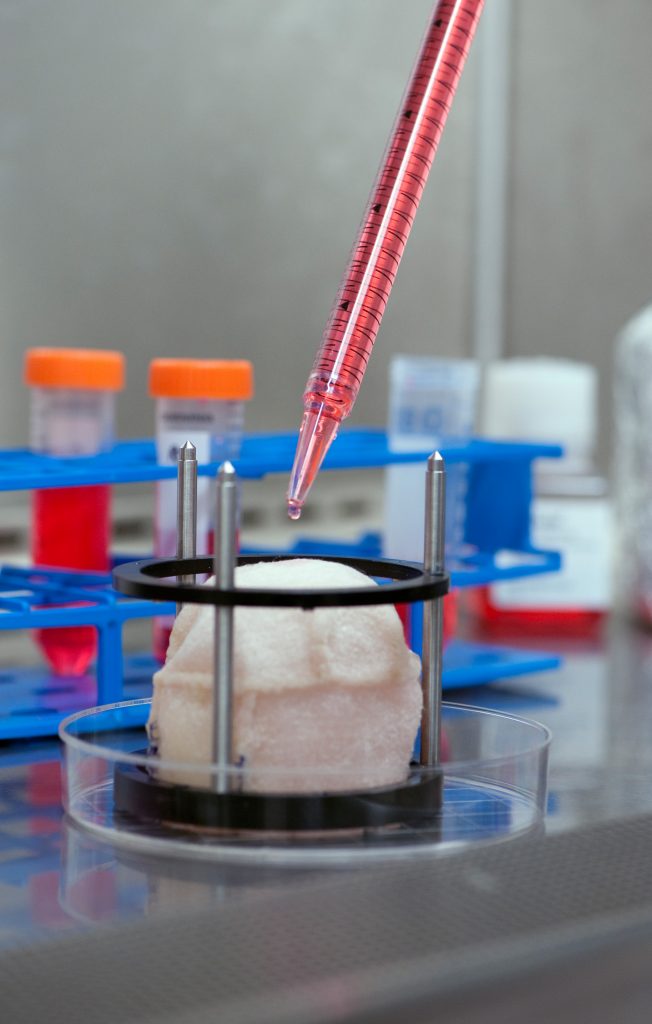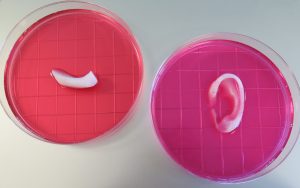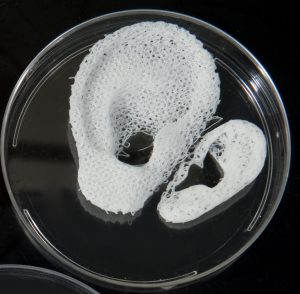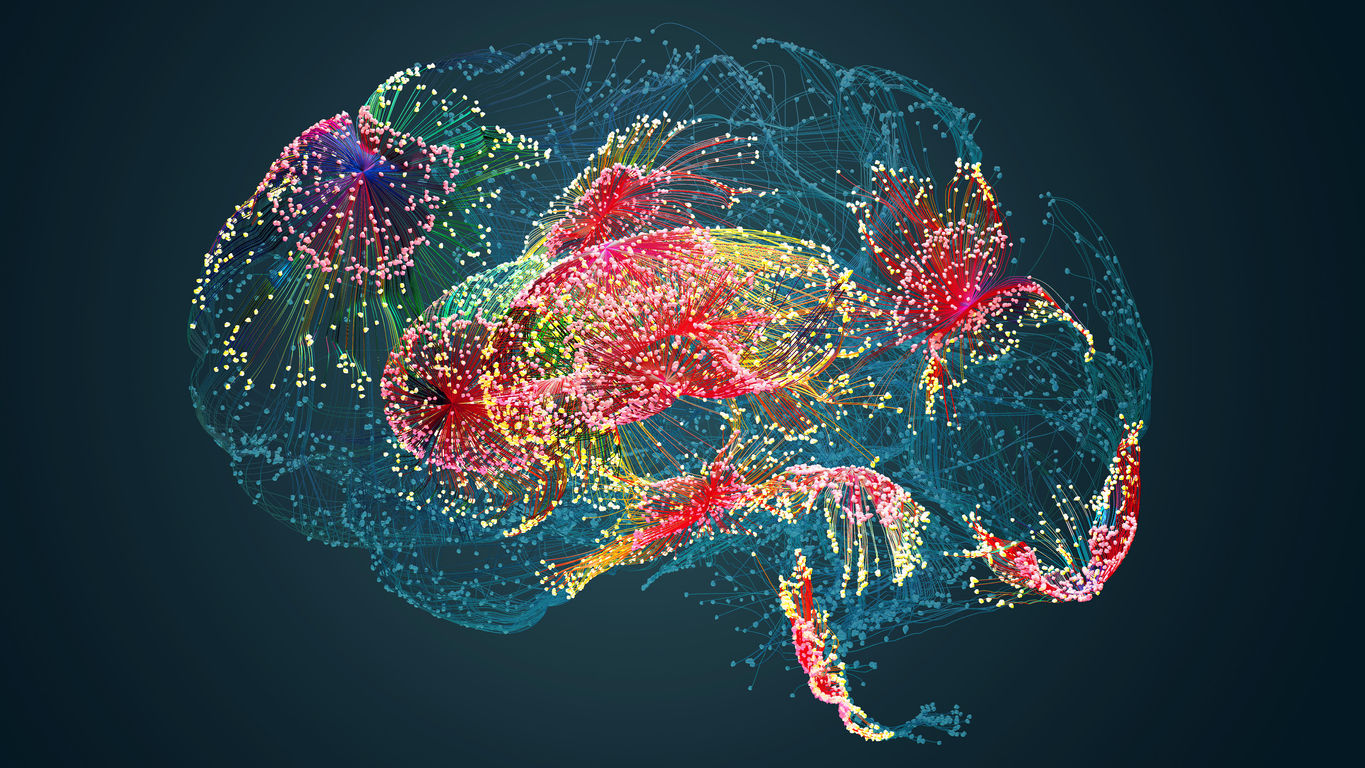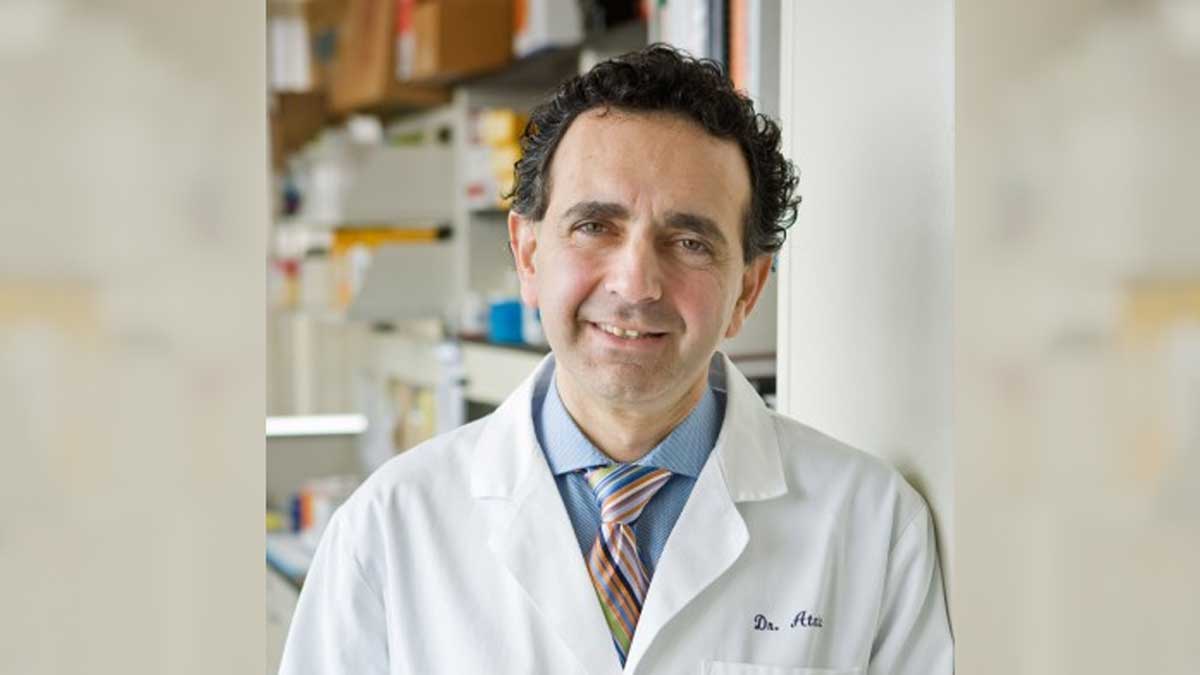“Back in the 90’s we created by hand, even without using the printer, bladders, skin, cartilage, urethra, muscle and vaginal organs, and later implanted them successfully in patients. The printer automated what we were already doing and scaled it up making some of the processes easier. Still, the technology has its own challenges. With hand made constructs you have more control as you are creating the tissue, but with the printed structure everything has to be built in before it is created, so that you have to have the whole plan and information ready to go once you push that ‘start’ button,” suggested Dr. Atala, who earned his medical degree from the University of Louisville School of Medicine and went onto complete a fellowship at Harvard Medical School, before joining Wake Forest Baptist in 2006 as the founding director of the Wake Forest Institute for Regenerative Medicine and chair of the Department of Urology.
The WFIRM is working to grow tissues and organs and develop healing cell therapies for more than 40 different areas of the body, from kidney and trachea to cartilage and skin. Dr. Atala and his team of scientists have been first in the world to implant lab-grown tissues and organs into patients. Starting in 1990 with most of their research and implanting the first structures at the end of that decade, using a 3D printer to build a synthetic scaffold of a human bladder, which they then coated with cells taken from their patients. New research at WFIRM shows innovative wound healing through the use of a bedside 3D skin printer.
Specialist Young-Joon Seol at WFIRM demonstrates bioprinting muscle tissue with The Integrated Tissue Organ Printing System.
“Today, we continue to develop replacement tissues and organs, and are also working to speed up the availability of these treatments to patients. The ultimate goal is to create tissues for patients. Part of that is taking a very small piece of the patients tissue from the organ that we are trying to reconstruct, like muscle or blood vessels, only to expand the cells outside of the body and then use them to create the organ or structure along with a scaffold or a hydrogel which is the glue that holds the cells together. We have been doing this for quite some time with patients and 16 years ago we realized that we needed to scale up the technology and automate it to work with thousands of patients at a time, so we started thinking about 3D printers, and began using the typical desktop inkjet printer which was modified in-house to print cells into a 3D shape,” continued Dr. Atala, who also directs the Armed Forces Institute of Regenerative Medicine, with federally funded projects underway in engineering blood vessels, developing treatments to heal wounds and engineering replacement tissues for devastating pelvic injuries.
The living cells were placed in the wells of the ink cartridge and the printer was programmed to print them in a certain order. The printer is now part of the permanent collection of the National Museum of Health and Medicine. According to Dr. Atala, all the printers at the WFIRM continue to be built in-house specifically to create tissues, so that they are highly specialized and able to create cells without damaging the tissue as it gets printed. Inside the institute, more than 400 scientists in the fields of biomedical and chemical engineering, cell and molecular biology, biochemistry, pharmacology, physiology, materials science, nanotechnology, genomics, proteomics, surgery and medicine work to try to develop some of the most advanced functional organs for their patients.
Dr. Atala claims that “we have to really understand cells to do this work. To get to where we are now, we studied and looked at cell biology during most of the first 10 years of our work. It is critical for us to understand how to harvest cells, keep them alive, how to grow them into large quantities, as well as making sure they retain their normal functions. The cells are alive and we need to keep them that way, giving them nutrition and keeping them in the same conditions as those they had in the human body – including a temperature of 37 degrees centigrades and 95% oxygen. We place them in incubators that offer the same conditions as the human body, later we artificially feed the cells with nutrients and when we create the tissues we feed them as well. We can only leave them outside of the body for a short period of time, between seven to ten days, depending on the organ.”
At WFRIM they are focusing on personalized medicine, whereby the scientists use the sample tissue from the patient they are treating, grow it and implant it back to avoid rejection. Dr. Atala claims that “these technologies get tested extensively before they are implanted into a patient,” and that “it could take years or even decades of research and investigation before going from the experimental phase to the actual trial in humans.”
“Our goal for the coming decade is to keep implanting tissues in patients, however, the most important thing for us is that we temper peoples expectations because these tissues come out very slowly and they come out one at a time, so we don’t give false hopes and provide the technology to patients who really need them. Working with over 40 different tissues and organs, means that about 10 applications of this technologies are already in patients. The research we have done helps us categorize tissues under order of complexity, so we know that flat structures (like skin) are the least complex; tubular structures (such as blood vessels) have the second level of complexity, and hollow non-tubular organs, including the bladder or stomach, have the third level of complexity because the architecture of the cells are manifold. Finally, the most complex organs are solid ones, like the heart, the liver and kidneys, which require more cells per centimeter,” implied the expert 3D bioprinting scientist.
The 3D printer at the Wake Forest Institute for Regenerative Medicine seeds different types of cells onto various scaffolds including ear cartilage.
With the goal to cure, rather than merely treat, disease, in the early 2000s Dr. Atala successfully led a project to grow a human bladder using bioprinting and transplanted it to a young patient suffering from spina bifida, a condition which can cause bladder problems. The patient’s case was an early example of what tissue engineering can accomplish, but advances in bioprinting are making such cases more common and now the lead investigator at Wake Forest’s institute has also set his eyes on bioprinting kidneys – one of the organs most in demand. And although he claims that the science is progressing in the right direction, it is still a long way from printing completely functional organs for transplant in humans. Dr. Atala began working way back when the tissues were engineered by hand and as the research advanced, he noticed the higher needs for better solutions.
“We are still looking for better ways to what we do today, and that will never change, because we will always want to improve the process of tissue engineering,” Dr. Atala said.
There are a lot of technologies benefiting the area of regenerative medicine, including nanotechnology and gene editing.
“As science advances, we can benefit from leading research in other areas and help each other out,” Dr. Atala said. “The pace has picked up, because we know so much more than we did 30 years ago, we have more knowledge that allows us to be more precise in our strategies. This does not mean that we are progressing faster but the information that we get, allows us to be more precise in how we target our solutions.”
Dr. Atala and his team understand firsthand how to treat and care for patients, which is why the WFIRM is so good at advancing regenerative medicine. Dr. Atala knows how important it is for a patient’s health to implant a tissue harvested from the person’s own cells, and looks forward to the next disruptive technologies that will lead regenerative medicine into further advances for better health solutions. One thing is for sure, demand for WFIRM’s technology will most likely be soaring in the next few years.
[Images: WFIRM]

